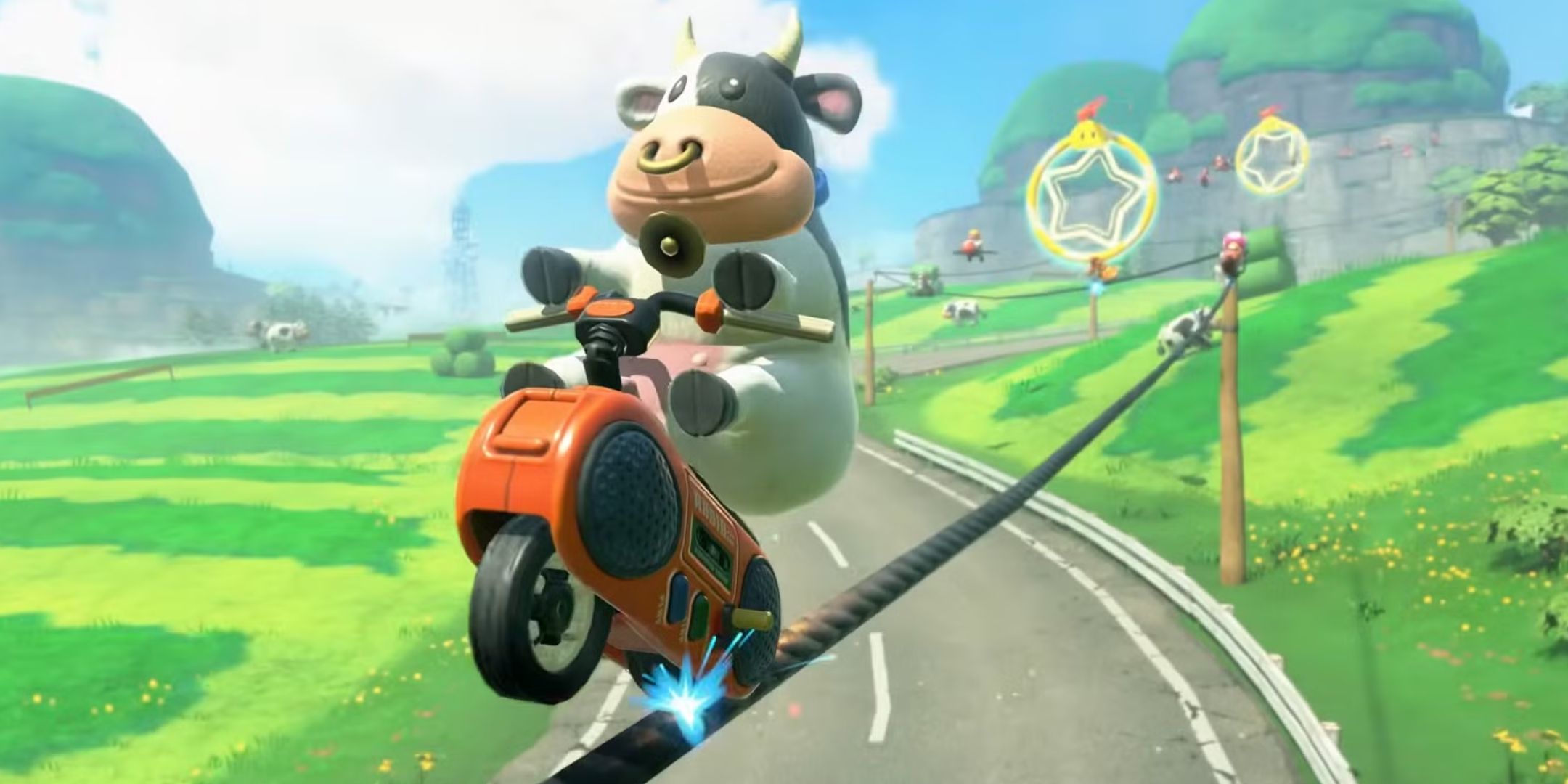For over a decade, fans of Mario Kart have been eagerly replaying Mario Kart 8 Deluxe. With the release of the Nintendo Switch 2 and Mario Kart World, this anticipation has come to an end. As the pinnacle of fun multiplayer gaming, this new installment is also Nintendo’s sole exclusive title for its launch lineup (please note that Welcome Tour is not included in this count). It must showcase the console’s technical capabilities and build upon the legacy of the legendary Mario Kart 8 Deluxe, which continues to be widely played and sold in bulk on the original Switch and is considered the most comprehensive game in the series. Does Mario Kart World manage to reinvent the formula? We will explore this together.
A DISAPPOINTING OPEN WORLD
However, this freedom quickly reveals its limitations, particularly in the Tour mode, which disappoints due to its execution, despite being intended to embody the core of the open-world experience. It appears that Nintendo released their game with an incomplete version of the open world, anticipating future updates to improve engagement. The company seems hesitant about this interconnected hub, placing it as a minor and barely noticeable option in the main menu. It is evident that racing remains Nintendo’s primary focus, and although the open world is intriguing, it is still viewed as an experiment needing refinement. Tour mode does offer several points of interest: exploring various biomes, beginning to memorize tracks, spotting shortcuts impossible to identify during a race, etc. Additionally, players can unlock all costumes and new vehicles by collecting required food and yellow pieces relatively quickly. Furthermore, the ‘Tour’ mode allows for completing scattered challenges in the form of blue blocks with varying difficulty levels, rewarding players with stickers to place on their kart, which remains rather superficial.
Although the open world may leave one wanting more, it provides an excellent foundation for future updates or upcoming events, and we can rely on Nintendo for that. However, at its core, Mario Kart World is all about the races! And on this front, the game largely delivers, with around thirty tracks to explore, multiple approaches, and even the ability to transition from one track to another due to their interconnection. Thankfully, Nintendo hasn’t lost its touch in level design. The new courses are wildly rich, featuring multiplying branching paths, twisted shortcuts, and cunning traps. Mastering the mid-air jump mechanic, which requires not touching the joystick while holding the drift button, is initially challenging, especially for veterans relearning to pilot, but once mastered, it transforms gameplay into an exhilarating aerial ballet where one grinds rails like a Tony Hawk in a red jumpsuit. The tracks seem designed for 24 players with welcome dispersal zones, avoiding the common bottleneck effect seen in previous installments. Yes, chaos is still present and perfectly fine, but it’s more diluted and evenly distributed. Unfortunately, some sections of the circuits consist of long, sterile straight lines, as if the game takes a breather between its high points.
BUT DES QUESTS DISAPPOINTING
The ‘Course VS’ mode perfectly exemplifies this innovation. After selecting a character, vehicle, and category in the traditional manner, players now have the option to choose between classic loop tracks or an innovative ‘At your choice’ feature that allows for free selection of any track on the map. In practice, one begins at a chosen starting point, such as Chutes Cheep Cheep, and then selects an arrival circuit from numerous options: Gouffre Pissenlit, Pic de l’Observatoire, Alpes DK, Galion de Wario, Cité Fleur de Sel, and many more. Each combination creates a unique course that blends various environments and themes, ranging from urban settings to Japanese-inspired landscapes, African savannahs, lush jungles, up to floating circuits in the clouds. This variety prevents monotony, making each race distinctive and fresh. The experience is further enhanced by a day-night cycle and changing weather conditions, which alter the visual atmosphere and racing dynamics significantly, with both spontaneous and triggered weather phenomena.
Furthermore, the Knock Out (Survival in English) mode emerges as another major innovation, transforming Mario Kart World into a sort of Battle Royale of kart racing. Here, tension is constant: successive marathon races eliminate the lowest-ranking drivers at each stage until only one winner remains. In addition to classic opponents, various dangers such as Bill Bomb cars or the Marto brothers come to sow chaos and complicate the race. These themed rallies — turbo, ice, moon, spikes, cherries, chestnut, cloud, heart — each consist of six circuits, offering a variety of intense and fun challenges, particularly in multiplayer where the choice of rallies depends on participant voting. This mechanism brings a refreshing change and a welcome adrenaline rush. The pace is also raised through a system that quickly returns the player to the track after a fall or mistake, ensuring close finishes and highly dynamic races. As for the ‘Rewind’ function, it allows a few seconds to be rewound to correct an error, but honestly, who uses it during a Grand Prix? It’s mainly an addition that could serve in solo play and for less experienced players, but remains rarely used in multiplayer where penalties are immediate.
In contrast to the innovation found throughout the game, the Battle mode, historically a cornerstone of the series, appears to have been neglected, seeming almost as an afterthought. The available arenas are limited in number and poorly developed, giving the impression of simple reused sections from the main map. The proposed variants are confined to two classic formats: Balloon Battle and Coin Run, with no indication of renewal or reinvention. Moreover, due to the maps being excessively large, the pace is immediately disrupted, resulting in more time spent searching for opponents than engaging in actual battles. This starkly contrasts with the game’s overall ambition. On a positive note, Mario Kart World establishes itself as a reference in arcade racing games, maintaining faithfulness to the franchise’s legacy. Players will find traditional Grand Prix options in 50cc, 100cc, and 150cc, Time Trials enhanced with developer ghosts, Free Races, and a Mirrored mode that requires significant effort to unlock. However, the absence of the 200cc mode at launch may disappoint fans seeking intense sensations and high-speed driving but is likely planned for later updates.
If deep customization was intentionally set aside in favor of an immediate approach—where stickers serve as the only aesthetic variation—the statistics remain active and influence race performance. Overall balance is satisfactory, although some minor imbalances are already apparent online, with one or two vehicles noticeably outperforming others. Despite this, the overall experience remains engaging, fun, and impressively efficient, combining a vast open world, a Survival mode that adds new layers of tension to the gameplay, and a solid foundation of game mechanics. It is difficult not to enjoy it, particularly when children are involved. This exemplifies Mario Kart’s enduring strength.
Have any thoughts?
Share your reaction or leave a quick response — we’d love to hear what you think!


